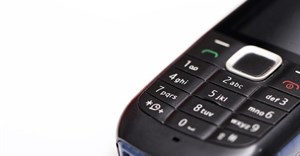
Subscribe & Follow
Cell phones still hot; more mobile advertising proposed
Although a new Harris Interactive study in the United States reveals that over one-third of consumers say the dire economy will not affect their spending habits, the 60% of consumers who will limit their discretionary spending will curtail going out to restaurants (74%) and limit their purchase of electronics (71%). Some 41% of consumers, however, have no plans to stop or cutback on the purchase of cell phones, making it an increasingly viable advertising channel.
To many, it seems the use of mobile phones has become an indispensable part of their lives. People are actually severing ties to land lines with increasing frequency. According to a new study from the National Center for Health Statistics, notes the report, 16% of US homes are using wireless phones exclusively.
These trends support the push by marketers to leverage mobile advertising as part of an integrated marketing program to promote their brands and sell products and services, Harris analysts conclude - especially during difficult economic times.
Milton Ellis, vice president and senior consultant, Harris Interactive technology group, says, "... there are a lot of people who are still spending money... and even those cutting back still need to buy essentials... the key is to reach out to them through innovative marketing, including mobile advertising... "
Among teens surveyed, 56% said they would be interested in viewing mobile ads with incentives, while 37% of adults noted that they would be receptive to such advertising.
Ellis continues, "... our research indicates that teens will be strong early adapters to this advertising, with adults not far behind... no other advertising medium approaches the personal relationship consumers have with their mobile devices... "
Some 80% of adults and 70% of teens identified "cash" as the top incentive for responding to mobile advertising. Additional popular incentives among teens are:
• Entertainment downloads (61%)
• Free music (57%)
• Complimentary minutes (53%)
Appealing incentives among adults are:
• Free minutes (49%)
• Discount coupons (37%)
• Free entertainment (31%)
• Music downloads (24%)
Text messaging is the most preferred advertising approach among over two-thirds (69% of adults and 64% of teens) of consumers. Teens are more willing to accept advertising images on their mobile phones (47%), versus adults (35%).
More than half (54%) of adult respondents said they are comfortable providing personal information to mobile advertising marketers if offered for the right incentive, while teens are very guarded about their personal information. Only 35% would divulge it, even if an incentive were offered. A quarter (25%) said they would never provide personal information.
Judith Ricker, division president, Harris Interactive marketing communications research group, concludes, "No matter how mobile advertising messages are delivered, our research shows that consumers demand that if a company is going to invade their personal space with advertising, it better be for something of interest to them. Personalisation is hyper-critical."
For more about this study, please visit HarrisInteractive here. For expanded data and charts, visit Marketing Charts.
Article courtesy of MediaPost









